Added Benefits When You Exercise to Lose Weight!
Added Benefits When You Exercise to Lose Weight!
 If you have already set up a good healthy diet plan, now would be the time to incorporate some exercises to lose weight. When you add some very simple exercises to your plan, the benefits can be simply amazing.
If you have already set up a good healthy diet plan, now would be the time to incorporate some exercises to lose weight. When you add some very simple exercises to your plan, the benefits can be simply amazing.
When you increase your activity levels it may help your sense of well being, and it could also help you gain more energy. When we have more energy we will be more incline to stay active, which will improve your life in some many different ways.
Here are just a few benefits you could experience when you exercise to lose weight and stay active.
Improves your Mind: Have you ever had one of those days where you could just pull your hair out. Stress is part of our everyday life. Just the simple act of walking can help. When you walk, it increases blood circulation and the oxygen and glucose that reach your brain. As you walk your breathing and heart rate increase which effectively oxygenate your brain. This may be why walking can clear your mind and relieves the stress factors you face. Studies have shown that the stroke risks can be cut by 50% for people that walk as little as 20 minutes a day.
Improves Energy Levels: Regular exercise may be better than taking a nap if you are fighting fatigue. If fatigue is a factor in your life, new research suggests exercise can increase your energy levels. Studies have shown that inactive people who completed a regular exercise program have reported an increase in energy levels. In fact some of the studies have shown that you can increase your energy level by 20% while decreasing your fatigue level by 65%.
Improves Sleep Quality: When you exercise on a regular basis, this may help you deal with the many different stress factors or worries you encounter on a daily basis. When you exercise and increase your activity levels you will give your body enough stimulation so you are not as restless when you prepare to sleep at night. If you are able to relax fully and control stress and worry at night you not only fall asleep faster but will improve you sleep cycles as well.
Improves Depression Symptoms: If you exercise 30 minutes a day for at least three to five days a week, it may improve depression symptoms significantly. By exercising and increasing you activity level it could improve you overall mood which will help with the feelings of sadness, anxiety, fatigue, anger and hopelessness. Remember exercise isn’t meant to replace medical treatment for depression, it is meant to help you cope with the feelings associated with this disorder.
These are just a few of the benefits you can achieve if you exercise to lose weight as well as eating healthy. The bottom line here is if you want to improve your overall health and maybe benefit in the ways above, exercising will certainly help.
The decision is …
Types of Kayaking Strokes
Types of Kayaking Strokes
 There are many different kayaking strokes but if you are just starting out there are basically three main strokes that you want to be concerned with… the forward paddle, the reverse paddle and turning the kayak.
There are many different kayaking strokes but if you are just starting out there are basically three main strokes that you want to be concerned with… the forward paddle, the reverse paddle and turning the kayak.
The Forward Paddle (front to back)
This paddle will definitely be your most commonly used stroke. Start by sitting up straight and prop your feet right up against the foot rests in your kayak. This will help you to have a more powerful stroke. Place the paddle in the water close to the kayak right around where your feet are and then make the stroke deep. Pull back towards you with a relaxed grip and watch as you glide smoothly through the water. You will use this forward paddle stroke in all different types of kayaking and it will get you to where you want to go.
The Reverse Paddle (back to front)
This stroke won’t be used as often but it is just as critical to know. For this paddle you will need to use the back of the paddle blade. Place the paddle in the water right around where your hips are. Then push the paddle toward the front of your kayak while turning your torso. To achieve a more powerful stroke you can reach further behind your hips when you place the paddle in the water. Remember to keep your elbows bent in order to avoid injury and pull the blade out of the water when it is even with your knees. Also remember to check over your shoulder to make sure that nothing is in your way behind the kayak.
Turning your Kayak
Of course everyone who kayaks needs to know how to turn the kayak properly. If you are unable to turn your kayak you may end up causing some unnecessary and embarrassing crashes. The best way to turn your kayak is to do a deep reverse stroke (back to front) on the side of the direction you want to turn. Most people tend to do the opposite and use a forward paddle on the opposite side of the direction they want to turn but this will not be nearly as effective.
Learning these three strokes will get you just about anyplace you need to go. If you are tandem kayaking you can do these strokes together in order to achieve more power and faster speeds. Remember that the power behind your kayak will always come from your torso… not your arms or your shoulders. Focus on using your core muscles when you perform these strokes for optimum performance.…
Mini-Stroke – What is the Difference Between a Major Stroke & a Mini-Stroke?
Mini-Stroke – What is the Difference Between a Major Stroke & a Mini-Stroke?
 When an individual experiences a stroke, they may experience a major stroke or a mini-stroke. Many individuals that experience a mini-stroke will delay seeking the medical attention required for the condition. As a result, it puts them at higher risk of experiencing a stroke that is considered to be life-threatening.
When an individual experiences a stroke, they may experience a major stroke or a mini-stroke. Many individuals that experience a mini-stroke will delay seeking the medical attention required for the condition. As a result, it puts them at higher risk of experiencing a stroke that is considered to be life-threatening.
This is referred to as a major stroke. It could occur in a short time span of a mini-stroke, or in the future of the sufferer. Both a mini-stroke and a major stroke could result in major complications as far as the health is concerned. In this guide, you will learn about these two types.
Mini-Stroke
A mini-stroke is called a transient ischemic attack or a TIA in the medical community. The symptoms that are experienced with this type of stroke are similar to the symptoms that are experienced by those that have a major stroke. However, the symptoms do not last nearly as long as those do that accompany a major stroke.
This happens when an individual experiences a blockage or a reduction to the blood flow that goes to a certain section of the brain. The obstruction to the blood flow is typically a blood clot. Within a short time, the clot will typically go away or pass through the vein or artery and it allows the blood flow appropriately once more.
Many medical professionals state that a mini-stroke is a warning that an individual could have a stroke in the future. If this type of stroke is experienced, it is important to avoid delaying treatment as it could induce a major stroke. The Symptoms of this type of stroke include, but are not limited to the following:
• Numbness and tingling sensations may be experienced on one side of the body.
• Many individuals find that they are unable to appropriately move one side of the body when they suffer from a mini-stroke.
• Language may become difficult. Many individuals find that they are unable to speak right and that they are confused when it comes to which words to use.
• Many individuals that suffer from a TIA have a difficult time understanding words that are said to them.
• Many sufferers find that they experience physical complications such as dizziness and challenges walking.
Major Stroke
A major stroke happens when a blockage in a blood vessel or artery occurs. It could also happen when there is bleeding within the brain. When this happens, a section of the brain will immediately start to die. The part of the body that is controlled by the section of the brain that becomes damaged is affected. A stroke is always considered to be a medical emergency.
Signs of a major stroke that could be potentially fatal include numbness or paralysis on one side of the body, complications with the balance of the body, vision chances, speech that is slurred, confusion, and headache. Regardless of whether someone …
Why Whole Food Vitamins Are Better Than Man
 When it comes to pregnancy nutrition, mothers-to-be should consider supplementing with whole food vitamins. The easiest way to maintain levels is with whole food supplements for rapid absorption. Some vitamin supplements contain more than the recommended daily intake. The easiest way to consume calcium that the body will recognize as food is to take whole food supplements.
When it comes to pregnancy nutrition, mothers-to-be should consider supplementing with whole food vitamins. The easiest way to maintain levels is with whole food supplements for rapid absorption. Some vitamin supplements contain more than the recommended daily intake. The easiest way to consume calcium that the body will recognize as food is to take whole food supplements. \n\nAnother healthy ingredient that an organic whole food vitamin supplement should include will be antioxidants. Incredivites contain a full day’s supply of Vitamin C, all the B vitamins and Vitamin D along with Vitamin, trace minerals and Vitamin K for a healthy balanced nutritional intake.\n\nIn the 1900s when Americans were consuming a largely natural, whole food diet directly from farm to table, obesity was an extremely rare occurrence. I suggest that Whole Food Nutrition is an amazing gift of nature that has long eluded our awareness and worse yet our supplements and health based choices for implementing the proper types of nutrition into our diets.\n\nIt is still not known whether the synthetic nutrients have the same potency as nutrients from whole foods. Even some of the fiber found in the fruits and vegetables shows up in these products. Experts say that a healthy diet incorporating a variety of so-called superfoods will help people maintain their weight, fight disease, and live longer.\n\nUnlike processed foods, whole foods are not very easily stored, meaning that to eat according to such a diet, you’ll need to visit a farmer’s market and buy your food fresh every few days. A balanced formula of carotenoids such as found in whole foods and whole food supplements will be better absorbed than individual supplements as too much of any one carotenoids may inhibit the absorption of others.
\n\nAnother healthy ingredient that an organic whole food vitamin supplement should include will be antioxidants. Incredivites contain a full day’s supply of Vitamin C, all the B vitamins and Vitamin D along with Vitamin, trace minerals and Vitamin K for a healthy balanced nutritional intake.\n\nIn the 1900s when Americans were consuming a largely natural, whole food diet directly from farm to table, obesity was an extremely rare occurrence. I suggest that Whole Food Nutrition is an amazing gift of nature that has long eluded our awareness and worse yet our supplements and health based choices for implementing the proper types of nutrition into our diets.\n\nIt is still not known whether the synthetic nutrients have the same potency as nutrients from whole foods. Even some of the fiber found in the fruits and vegetables shows up in these products. Experts say that a healthy diet incorporating a variety of so-called superfoods will help people maintain their weight, fight disease, and live longer.\n\nUnlike processed foods, whole foods are not very easily stored, meaning that to eat according to such a diet, you’ll need to visit a farmer’s market and buy your food fresh every few days. A balanced formula of carotenoids such as found in whole foods and whole food supplements will be better absorbed than individual supplements as too much of any one carotenoids may inhibit the absorption of others.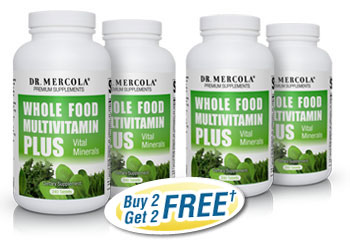 …
…
Weight Management – A Survival Tool to Limit the Risk of Stroke
Weight Management – A Survival Tool to Limit the Risk of Stroke
 Obesity, or being excessively overweight, has become an epidemic worldwide that have caused many health-related diseases, including stroke. In fact, obesity has become the secondary risk factor for stroke! Managing one’s weight is not simply being vane but rather a vital key to prevent stroke.
Obesity, or being excessively overweight, has become an epidemic worldwide that have caused many health-related diseases, including stroke. In fact, obesity has become the secondary risk factor for stroke! Managing one’s weight is not simply being vane but rather a vital key to prevent stroke.
Managing one’s weight means attaining and keeping body weight that’s within the healthy range. Obesity occurs when you go beyond the healthy weight range. There are two ways to determine if you are obese: Body Mass Index (BMI) and Chest-Waist Ratio.
BMI, which measures the ratio of your weight to your height, is calculated by dividing your weight in kilograms by your height in square meters. The World Health Organization has a standard table for BMI which you could refer to online.
Meanwhile, the Chest-Waist Ratio, which measures the ratio of your waist circumference to your chest circumference, is determined by using a tape measure to measure your chest and your waist. Your chest’s circumference should be bigger by at least 12.5 cm than your waist to fall within the healthy range.
Although BMI is commonly used, the Chest-Waist Ratio is more reliable because BMI does not consider body proportion but overall size, which has the tendency to identify shorter but muscled people as overweight. The Chest-Waist Ratio is also more relevant as it is an important tool to identify your risk to stroke as it quantifies the measurement of your abdominal fat.
Studies show that abdominal obesity is associated with a greater risk of ischemic stroke in men and women in all race and ethnic groups, especially those under age 65. Obese people have larger deposits of fats in their blood stream which causes unnecessary blood clots in the arteries or artherosclerosis that eventually lead to stroke.
Statistics reveal an estimated 1.5 billion adults worldwide will be obese by 2015 and is expected to result to thousands of deaths due to stroke, diabetes, and heart disease borne from it. Medical professionals worldwide are now invoking everyone to be alarmed with their health.
People who have not had a stroke before can prevent having one by managing their weight within the normal levels. All the more, stroke patients need to manage their weight to avoid another stroke and other complications such as diabetes and high blood pressure that also lead to stroke.
If results of your BMI and/or Chest-Waist Ratio show that you are obese, the important thing to do now is to lose the necessary pounds not with a one-day crash diet scheme but with a long-term change in lifestyle. A lifestyle of regular physical activities, nutritious food, and free of vices like smoking and excessive alcohol drinking.
Weight management is the survival tool to limit the risk of stroke and other deadly diseases. Consulting a nutritionist on how you can change your lifestyle will keep the unwanted pounds off for good for a happy, healthy life.…
Nutrition Basics
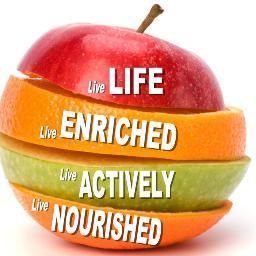 Are you experiencing hair loss now? Some people go beyond all that and eat raw animal foods too. In many cases, the vitamins get replaced by fats which in turn can cause depression and stress. Larabar and Organic Food Bars are a couple of really good examples, they are tasty, healthy, include natural ingredients and come in a variety of flavors.
Are you experiencing hair loss now? Some people go beyond all that and eat raw animal foods too. In many cases, the vitamins get replaced by fats which in turn can cause depression and stress. Larabar and Organic Food Bars are a couple of really good examples, they are tasty, healthy, include natural ingredients and come in a variety of flavors. \n\nStay with whole grain foods and lean meats. I find that the easiest thing to do it make sure I eat the right food at the right times. Perhaps people need a mixture of raw plant foods and supplementary animal foods to be successful on the diet. One’s oral health, however, goes beyond a great-looking, pain-free smile; it also plays a big role in the health of one’s body.\n\nVitamins are used in combination with the other nutrients so as to enrich body health. One concept about nutrition that I like to keep in mind is that if you can trace what you are eating back to where it came from, without breaking a sweat, you are probably on the right track.\n\nIn the end the nutritional labels tend to exhibit footnotes describing the percentage of nutrients with respect to its weight in your diet. Stage #1 Diet: Diet is everything you eat and drink, not just the food you to eat but also all the liquids and supplements as well.
\n\nStay with whole grain foods and lean meats. I find that the easiest thing to do it make sure I eat the right food at the right times. Perhaps people need a mixture of raw plant foods and supplementary animal foods to be successful on the diet. One’s oral health, however, goes beyond a great-looking, pain-free smile; it also plays a big role in the health of one’s body.\n\nVitamins are used in combination with the other nutrients so as to enrich body health. One concept about nutrition that I like to keep in mind is that if you can trace what you are eating back to where it came from, without breaking a sweat, you are probably on the right track.\n\nIn the end the nutritional labels tend to exhibit footnotes describing the percentage of nutrients with respect to its weight in your diet. Stage #1 Diet: Diet is everything you eat and drink, not just the food you to eat but also all the liquids and supplements as well.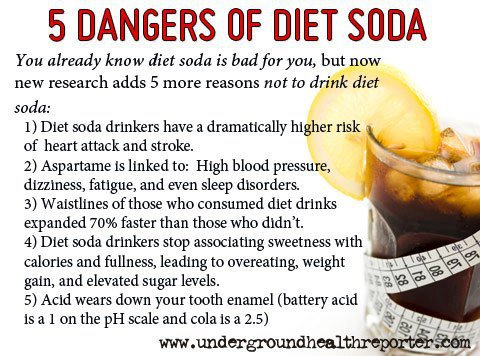 \n\nChoosing the right infant nutrition is an effective way of ensuring that children remain healthy and enjoy the best possible start. Now I just continue that cycle of exercise, healthy eating with the addition of supplements and I’m able to improve my fitness each day, month, and year.…
\n\nChoosing the right infant nutrition is an effective way of ensuring that children remain healthy and enjoy the best possible start. Now I just continue that cycle of exercise, healthy eating with the addition of supplements and I’m able to improve my fitness each day, month, and year.…
2013 Chrysler 200 Convertible Tech Specs
2013 Chrysler 200 Convertible Tech Specs
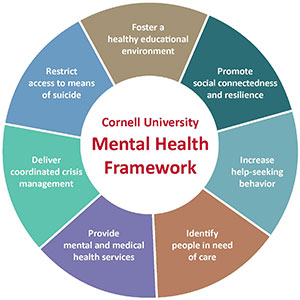 Chrysler released its 200 convertible in January 2011, replacing the previous Sebring model. For 2013, the convertible returns, a front-wheel-drive midsize model that is built at an assembly plant in Sterling Heights, Michigan. There aren’t many convertibles available on the market, an edge that Chrysler continues to enjoy year after year. Chrysler prices the 200 from about $27,000 with fully equipped models topping $32,000. Both cloth and retractable hard top models are available.
Chrysler released its 200 convertible in January 2011, replacing the previous Sebring model. For 2013, the convertible returns, a front-wheel-drive midsize model that is built at an assembly plant in Sterling Heights, Michigan. There aren’t many convertibles available on the market, an edge that Chrysler continues to enjoy year after year. Chrysler prices the 200 from about $27,000 with fully equipped models topping $32,000. Both cloth and retractable hard top models are available.
Length, Width and Height
Utilizing a steel unibody construction, the 2013 Chrysler 200 Convertible sits on a 108.9-inch wheelbase and is 194.8 inches long, 72.5 inches wide by 57.9 inches tall. This 2+2 model has 88.4 cubic feet of passenger volume and 13.3 cubic feet of trunk volume with the top up. Drop the top and your storage capacity falls to 7.0 cubic feet.
Engine Choices
The standard engine powering the 2013 Chrysler 200 Convertible is a 16-valve inline four cylinder that displaces at 144 cubic inches or 2.4 liters. This engine measures 3.46 inches bore by 3.82 inches stroke and has a 10.5 to 1 compression ratio. Maximum horsepower output of 173 at 6,000 rpm can be realized. This engine has an output of 166 foot-pounds of torque at 4,400 rpm. It is paired with a 6-speed automatic transmission and gets 18 mpg city, 29 mpg highway. This model takes regular grade gasoline.
Also available is a 3.6-liter V-6 24-valve engine that is also paired with a 6-speed automatic transmission. This engine displaces at 3.6 liters and measures 3.78 inches bore by 3.28 inches stroke, and has a 10.2 to 1 compression ratio. The V-6 makes 283 horsepower at 6,400 rpm and 260 foot-pounds of torque at 4,400 rpm. It takes regular grade gasoline and is rated at 19 mpg city, 29 mpg highway.
Steering, Suspension and Tires
Chrysler 200 features power rack and pinion steering, and comes with independent MacPherson struts up front with a stabilizer bar. In the rear, Chrysler makes use of a multi-link independent suspension with coil springs and a stabilizer bar.
Each model has a 1,000 pound towing capacity. Curb weight ranges from 3,898 to 4,000 pounds. Standard 17-inch wheels are wrapped within all-season Michelin Primacy MXV4 Touring tires. Optionally, 18-inch wells can be had and are wrapped within all-season Goodyear Eagle LS-2 Touring tires.
New for 2013
Changes for 2013 include an upgraded suspension system and three exterior color choices. This model is sold in Touring, Limited and S editions, with top of the line editions brining in larger wheels, a Premium Boston Acoustics speakers, heated front seats, an upgraded navigation system, a remote USB port and Bluetooth streaming.…
Nourishing The Body With Whole Food Vitamins
 This is very controversial, and everyone claims the right answer. You can also add Catie’s Whole Food Vitamin C Plus to smoothies and shakes – click here for recipes Keep container out of heat and light, and close tightly. In my opinion I would say this study looks at the effects of whole food nutrition on health in comparison to vitamins.
This is very controversial, and everyone claims the right answer. You can also add Catie’s Whole Food Vitamin C Plus to smoothies and shakes – click here for recipes Keep container out of heat and light, and close tightly. In my opinion I would say this study looks at the effects of whole food nutrition on health in comparison to vitamins.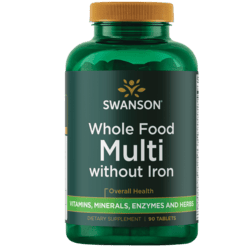 \n\nGood plant sources of fiber include psyllium seed husk, bran flakes, legumes, oats, rye, barley, prune juice, plums, lentils, beans, quinoa, berries, bananas, broccoli, carrots, artichokes, potatoes, sweet potatoes, onions, whole grain foods, wheat, corn bran, flax seed, green beans and tomatoes.\n\nWhole foods provide the nutrients in less concentrated form and don’t have the same risks. CyberEnzyme deliver ensures maximum digestion and absorption of the 9 amino acid chelated minerals along with the vitamins to promote healthy nutrition. Good whole food supplements sources of iron include red meat, fish, poultry, tofu, beans, lentils, leafy green vegetables, peas, and fortified products like bread and breakfast cereals.
\n\nGood plant sources of fiber include psyllium seed husk, bran flakes, legumes, oats, rye, barley, prune juice, plums, lentils, beans, quinoa, berries, bananas, broccoli, carrots, artichokes, potatoes, sweet potatoes, onions, whole grain foods, wheat, corn bran, flax seed, green beans and tomatoes.\n\nWhole foods provide the nutrients in less concentrated form and don’t have the same risks. CyberEnzyme deliver ensures maximum digestion and absorption of the 9 amino acid chelated minerals along with the vitamins to promote healthy nutrition. Good whole food supplements sources of iron include red meat, fish, poultry, tofu, beans, lentils, leafy green vegetables, peas, and fortified products like bread and breakfast cereals. \n\nThey are made from nutritious whole plants and fruits, such as blueberries, cranberries, strawberries, blackberries, cherries, apricots, papaya, oranges, grapes, pineapples, plums, bilberry, seaweed, kale, spinach, wheat grass, brussels sprouts, asparagus, broccoli, beets, carrots, parsley, cabbage, cauliflower, organic mushrooms and garlic.\n\nEating food that is artificial like processed and fast foods can bring a sense of being dull-witted and a feeling of wanting to just go to sleep. So when naturally grown tomatoes are dehydrated and put in capsule form, you could get the benefits of the vitamins only by swallowing a few capsules of pure goodness.…
\n\nThey are made from nutritious whole plants and fruits, such as blueberries, cranberries, strawberries, blackberries, cherries, apricots, papaya, oranges, grapes, pineapples, plums, bilberry, seaweed, kale, spinach, wheat grass, brussels sprouts, asparagus, broccoli, beets, carrots, parsley, cabbage, cauliflower, organic mushrooms and garlic.\n\nEating food that is artificial like processed and fast foods can bring a sense of being dull-witted and a feeling of wanting to just go to sleep. So when naturally grown tomatoes are dehydrated and put in capsule form, you could get the benefits of the vitamins only by swallowing a few capsules of pure goodness.…
How to Putt and Lower Your Scores Today!
How to Putt and Lower Your Scores Today!
 The average amateur three putts 8 to 10 holes. Most of it is because they do not take the time to understand putting, and what goes into it. If you are reading this then you are taking the first step to becoming a better golfer.
The average amateur three putts 8 to 10 holes. Most of it is because they do not take the time to understand putting, and what goes into it. If you are reading this then you are taking the first step to becoming a better golfer.
Their are two tips that I believe to be most important in putting to start out with.
First is having a nice smooth stroke, where the shoulder and arms work together, with no wrist movement. Now their is a very simple drill, that with some practice, you will master in no time.
To get this perfect stroke, you need your putter, and a second club. You take the second club and have the across your body and under your arms. While you are taking your putting stroke you are to keep the club pressed against your body. This ensures that you have a pendulum like stroke with no wrist in the stroke.
Secondly, this is the stroke I personally use and has improved my score unbelievably. It is called the 2 for 1 stroke.
This means that for however far you take back your putter you go through twice as much. So If your backswing is 5 inches then your follow through is 10 inches. This may take a couple minutes to get the hang of, but I guarantee it will help your score tremendously.
What it does is it ensures that you accelerate through the ball, hitting it solidly, so that it has a good roll, with little bounce.
There you go, with the nice pendulum like stroke, and the 2 for 1 stroke combined into 1, it will be hard for you to miss a putt.…
Home Care – Raising Stroke Awareness
Home Care – Raising Stroke Awareness
 Often people who have strokes, after initial hospitalisation, are sent home with home care to rehabilitate but rather than ending up in this position it is best to be aware about how to prevent strokes.
Often people who have strokes, after initial hospitalisation, are sent home with home care to rehabilitate but rather than ending up in this position it is best to be aware about how to prevent strokes.
There have been adverts on the television showing people what to look out for when a person is having a stroke. This campaign is about getting people who are suffering a stroke quicker medical treatment and letting the public know how important fast action is to reduce the impact of a stroke.
The latest thing to be aware of is the link between Atrial Fibrillation (AF) and strokes, if you suffer from AF then you need to consult your GP on how that affects your risk of getting a stroke and the preventative steps that can be taken.
AF affects about 750,000 people in the UK and accounts for about one in six strokes, but AF related strokes can be prevented because once your GP is aware of your situation he can give you the right medication.
AF’s most common symptom is a fast and irregular heartbeat. An irregular heartbeat is also known as an abnormal heart rhythm or arrhythmia.
The symptoms of AF are:
Palpitations – this means you become aware of your heart. You may feel it beating in a fast and irregular way.
Dizziness.
Angina (chest pains) may develop. In particular, the pains tend to occur when you exert yourself, but may even occur when resting.
Breathlessness is often the first symptom that develops. It may occur all the time, but you may become breathless when you exert yourself, doing a bit of gardening or walking up the stairs.
To raise awareness the Stroke Association is running a campaign on AF, its link to strokes and the signs to watch out for. People are sometimes reluctant to talk to a GP about stroke risks but the message is that if you are concerned you must ask first, before it’s too late.
If you want more information on AF The Stroke Association have a free factsheet F26 Atrial fibrillation and stroke. The Stroke helpline is 0303 3033 100 and the factsheet is available for download from .
If you do suffer a stroke then you need to make sure that you are given proper advice as soon as possible on how you can get back to normal. Access to a physio is usually needed if there has been any loss of limb use.…
